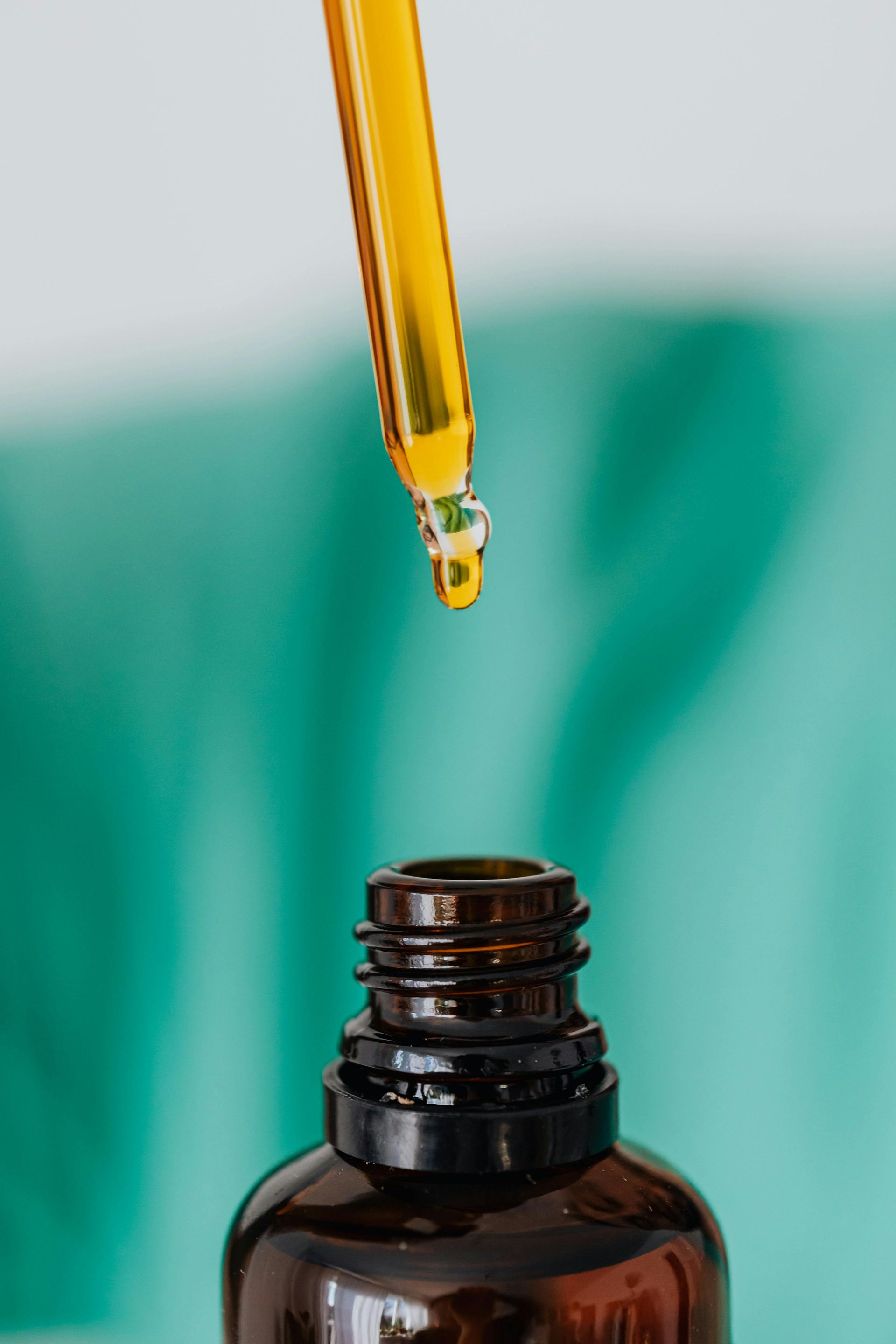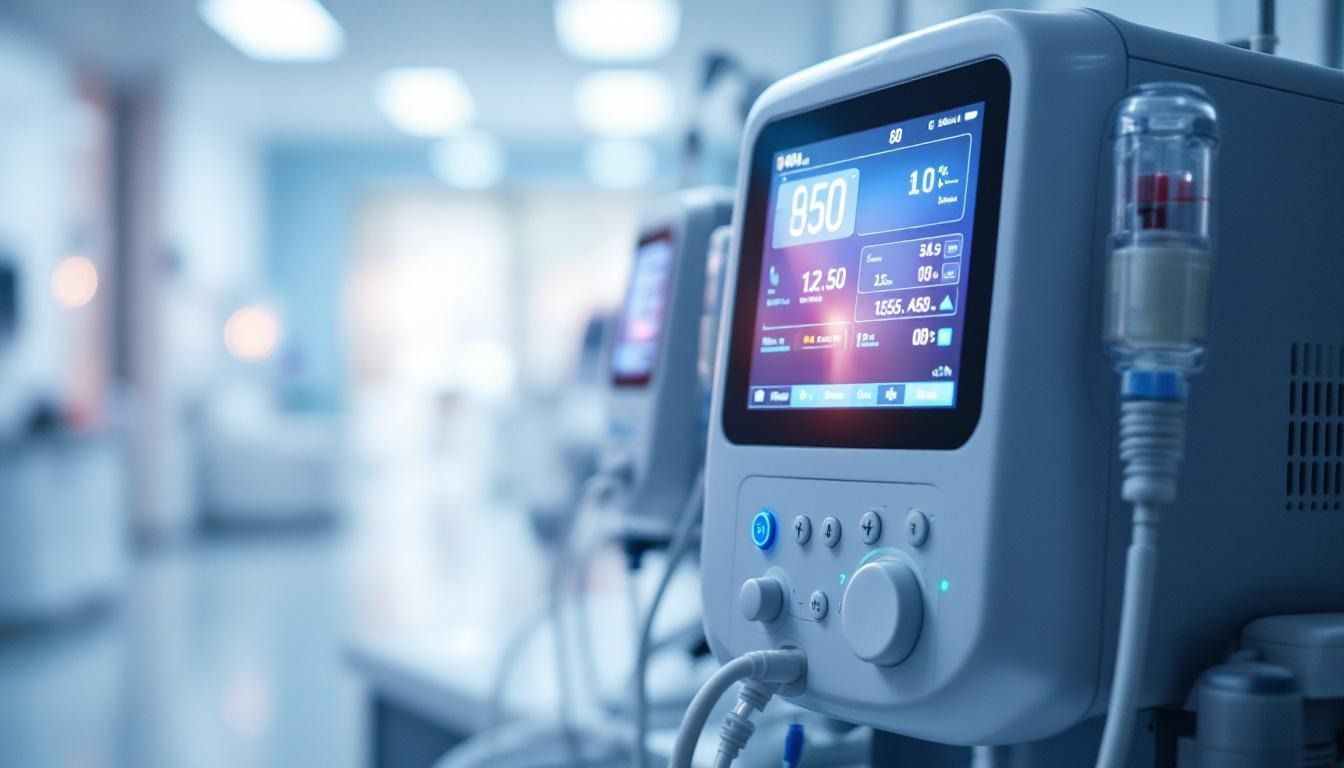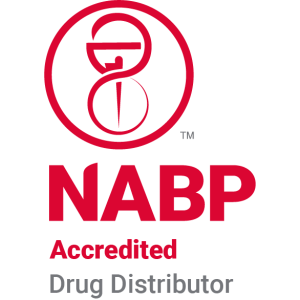How to Minimize the Risk of Hyperglycemia in TPN Patients
Understanding Hyperglycemia in Total Parenteral Nutrition
Hyperglycemia is the most common complication observed in patients receiving total parenteral nutrition (TPN) and significantly impacts patient outcomes. Managing this condition requires a comprehensive approach involving nutritional formulation, vigilant monitoring, and pharmacological intervention. This article explores the causes, risk factors, clinical implications, and evidence-based strategies to minimize hyperglycemia in TPN patients, aiming to improve their prognosis and reduce associated complications.
The Relationship Between TPN and Hyperglycemia

Causes of hyperglycemia in TPN patients
Total Parenteral Nutrition (TPN) often leads to hyperglycemia primarily because of its high carbohydrate content, particularly glucose. The infusion supplies a large amount of glucose that can surpass the body's capacity to utilize or store it effectively, especially in critically ill or insulin-resistant patients. Moreover, TPN can promote insulin resistance due to stress-related hormonal changes, cytokine release, and systemic inflammation, all of which impair insulin signaling pathways. Patients with pre-existing conditions like diabetes or metabolic syndrome, as well as those experiencing severe illness, are especially vulnerable.
Additional factors include stress from hospitalization and surgeries, use of vasoactive medications, corticosteroids, and other drugs that affect glucose metabolism. High glucose infusion rates, often exceeding 4 mg/kg/min, further aggravate hyperglycemia. The body's response involves increased hepatic glucose production and decreased insulin effectiveness, compounding the problem further.
Prevalence and risk factors
Hyperglycemia affects nearly half of all patients receiving TPN in hospitals, with prevalence rates varying from 17% to over 50%, depending on definitions and patient populations. Studies show that around 30% of TPN recipients experience hyperglycemia, defined as blood glucose equal to or greater than 180 mg/dL. The risk increases with longer TPN duration, often rising approximately 10% for each additional day of therapy.
Key risk factors include obesity (BMI >25 kg/m2), older age, prior history of type 2 diabetes, use of steroids, and the presence of infections or sepsis. The use of vasopressors and certain surgical indications for TPN also elevate the risk. Elevated HbA1c levels before TPN initiation further predict the likelihood of hyperglycemia.
Why does TPN cause hyperglycemia?
TPN causes hyperglycemia mainly because of its high carbohydrate load, which can exceed the body's ability to metabolize glucose efficiently. The delivery of large amounts of dextrose surpasses the insulin response, especially in patients with insulin resistance. This overload overwhelms regulatory mechanisms, leading to elevated serum glucose levels.
Besides the carbohydrate component, stress-related hormones such as cortisol and catecholamines elevate during illness, increasing hepatic glucose production. Cytokines released during inflammation impair insulin signaling pathways, fostering insulin resistance. These combined effects result in persistent high blood glucose levels, making hyperglycemia a common complication.
What are the symptoms of hyperglycemia related to TPN?
Hyperglycemia often presents with vague symptoms such as increased thirst, frequent urination, fatigue, and blurred vision. In severe cases, symptoms of diabetic ketoacidosis, including nausea, vomiting, abdominal pain, rapid breathing, and confusion, can occur.
Laboratory findings include elevated blood glucose levels, typically above 180 mg/dL, which increases the risk of infections like pneumonia and urinary tract infections. Hyperglycemia impairs immune responses, worsens inflammation, and promotes cytokine release, thereby increasing the likelihood of further complications. Persistent high glucose levels are associated with worse outcomes, including organ dysfunction and death.
How is hyperglycemia managed during TPN therapy?
Effective management involves frequent blood glucose monitoring—initially every 4 to 6 hours—and prompt adjustments to insulin therapy. Strategies to control hyperglycemia include reducing the carbohydrate content of TPN by lowering dextrose infusion rates or replacing glucose with lipids or non-glucose carbohydrates like fructose.
Insulin therapy is vital, with options including adding insulin directly into the TPN solution or administering it via continuous intravenous infusion, especially for critically ill patients. Subcutaneous basal-bolus regimens or correctional insulin doses are used in stable patients. Maintaining blood glucose within target ranges of 140–180 mg/dL reduces the risk of complications.
Monitoring and adjusting insulin doses are critical during therapy, particularly when TPN is interrupted or transitioned to enteral feeding. A multiprofessional team—including physicians, dietitians, nurses, and pharmacists—is essential for individualized care.
Are there strategies to minimize the risk of hyperglycemia in TPN?
Preventive measures include tailoring TPN formulations to individual metabolic needs, especially lowering carbohydrate loads and increasing lipid content. Using lipid emulsions such as olive oil-based formulas with lower omega-6 fatty acids can improve safety and outcomes.
Proactive insulin management involves adding insulin to TPN solutions or using continuous IV insulin infusions in unstable patients. Close blood glucose monitoring allows for timely dose adjustments.
Early initiation of hypocaloric or low-dextrose TPN, combined with gradual transition to enteral nutrition or oral intake, reduces hyperglycemia risk. Multidisciplinary protocols and adherence to evidence-based practices further mitigate complications.
What are the guidelines for insulin use with TPN?
Current guidelines recommend frequent blood glucose monitoring and adjusting insulin accordingly. Insulin can be added directly to TPN admixtures at a ratio such as 0.1 units per gram of dextrose or administered via continuous IV infusion, especially in critically ill patients. In stable settings, long-acting insulins can be added to the TPN bag with correction doses.
The target blood glucose range in TPN patients is generally 140–180 mg/dL. Protocols emphasize individualized care, with adjustments based on patient response and clinical status.
How does TPN impact overall patient outcomes with regard to blood glucose regulation?
Proper glycemic control during TPN has a significant influence on patient outcomes. Hyperglycemia is associated with increased mortality, greater infection rates, longer hospital stays, and higher rates of organ failure.
Elevated blood glucose levels above 180 mg/dL within the first 24 hours of TPN initiation predict poorer outcomes. Studies demonstrate that maintaining glucose within target ranges reduces the incidence of sepsis, pneumonia, and renal failure, thereby improving overall prognosis.
On the other hand, hypoglycemia remains a concern, particularly with aggressive insulin protocols. Regular monitoring and cautious dose adjustments are vital to avoid such complications.
Is hypoglycemia a concern in patients receiving TPN, and how is it managed?
Yes, hypoglycemia can occur, especially during abrupt changes in TPN infusion or insulin therapy, or if insulin doses are too high relative to carbohydrate intake. It is less frequent but potentially dangerous.
Prevention involves close, frequent blood glucose measurements and gradual dose titrations of insulin and nutrition support. Management of hypoglycemia includes reducing insulin, increasing carbohydrate infusion, and administering dextrose solutions as needed.
In summary, controlling hyperglycemia in TPN therapy requires a comprehensive, patient-centered approach involving nutritional adjustments, insulin therapy, and multidisciplinary coordination to optimize outcomes and reduce complications.
Optimizing Nutritional Content to Prevent Hyperglycemia

How does adjusting nutritional composition influence hyperglycemia risk?
Adjusting the nutritional composition, particularly reducing carbohydrate content and increasing lipids, plays a vital role in minimizing hyperglycemia risk among TPN patients. Limiting dextrose infusion to less than 150 g/day or reducing the glucose infusion rate to below 4 mg/kg/min helps prevent excessive blood sugar elevation. Incorporating lipid emulsions—especially those with lower omega-6 fatty acids, such as olive oil-based emulsions—can provide an energy source without exacerbating hyperglycemia. Additionally, hypocaloric or low-energy TPN minimizes the carbohydrate load, decreasing the glycemic response, and allows for better control in glucose-sensitive individuals. Tailoring nutrition to individual metabolic needs and clinical status is essential to optimize outcomes.
What is the role of lipid emulsions in TPN to manage blood glucose levels?
Lipid emulsions, particularly those with lower omega-6 fatty acids like olive oil-based formulas, provide a high-energy alternative to carbohydrate-rich TPN solutions without contributing significantly to hyperglycemia. Their inclusion reduces the total carbohydrate load and helps achieve a balanced nutritional profile. Using lipid-based TPN can lower insulin requirements and improve metabolic safety, especially in insulin-resistant or diabetic patients. Lipids also support cellular functions and immune response, contributing to overall patient stability. Integrating lipid emulsions into TPN formulations is a strategic method to modify glucose intake and manage blood sugar levels effectively.
Why is hypocaloric nutrition beneficial in hyperglycemia prevention?
Hypocaloric nutrition—delivering fewer calories than the estimated energy expenditure—reduces the carbohydrate load in TPN, thereby lowering the risk of hyperglycemia, especially in critically ill or insulin-resistant patients. Carefully calculated hypocaloric TPN maintains essential nutrient delivery while minimizing blood glucose spikes. This approach also reduces the secretion of stress hormones that impair insulin sensitivity and prevents excessive lipolysis. Properly implemented, hypocaloric nutrition improves glycemic control, diminishes insulin requirements, and reduces complications associated with hyperglycemia, such as infections and organ dysfunction.
The Role of Insulin Therapy in Managing Hyperglycemia During TPN

What insulin strategies are effective for hyperglycemia management in TPN?
Effective insulin approaches for controlling high blood sugar during total parenteral nutrition (TPN) involve tailored strategies suited to the patient's condition. In critically ill patients, continuous intravenous (IV) insulin infusion is the preferred choice because it allows for rapid titration and precise dosing adjustments based on frequent blood glucose (BG) monitoring. This method enables healthcare providers to respond swiftly to fluctuating metabolic demands, reducing risks such as hyperglycemia and hypoglycemia.
For stable patients, adding long-acting insulin to the TPN formulation combined with scheduled short-acting insulin shots—following a basal-bolus regimen—mimics normal insulin secretion patterns. This approach provides a steady insulin baseline and flexible correction doses as needed. Correctional insulin doses are administered based on the latest BG readings, ensuring better control within the target range of 140 to 180 mg/dL.
These combined strategies help maintain tight glycemic control and reduce complications such as infections and organ dysfunction. When switching off TPN, insulin doses should be carefully tapered and personalized to prevent blood sugar swings, emphasizing the importance of continuous monitoring and multidisciplinary management.
How does intra-venous insulin infusion offer advantages over subcutaneous routes in TPN management?
Intravenous insulin delivery provides significant benefits over subcutaneous (SC) injections, especially in critically ill patients. IV infusion allows immediate dose adjustments, offering rapid response to changing blood glucose levels. This flexibility is crucial in patients with unstable metabolic states, such as those in intensive care units (ICUs), where blood glucose can fluctuate quickly.
With IV infusion, clinicians can precisely titrate insulin doses—incrementally increasing or decreasing—based on real-time BG measurements. This precision enhances safety and helps avoid dangerous hypoglycemic episodes. Additionally, IV insulin enables better control of hyperglycemia, which is often associated with increased mortality and complications in critically ill patients.
On the other hand, subcutaneous insulin involves variable absorption and slower adjustment times. While effective for stable, non-critical patients, it may not meet the demands of patients experiencing rapid metabolic changes, making IV infusion the preferred method during critical illness or severe hyperglycemia.
What are the ideal insulin regimens for stable TPN patients?
For patients on TPN who are hemodynamically stable, an optimal insulin regimen combines long-acting basal insulin—such as glargine or detemir—with scheduled short-acting or rapid-acting insulin administered before feeds or as correction doses. This basal-bolus regimen can be tailored to individual needs, considering the carbohydrate content of TPN, patient's previous insulin requirements, and blood glucose patterns.
The basal insulin provides a consistent background level, while bolus doses manage post-feeding glucose spikes and help correct any hyperglycemia. Adjustments are made gradually based on BG trends, aiming to keep levels within the target range of 140–180 mg/dL.
This approach reduces the risk of hypoglycemia compared to sliding scale insulin and offers flexibility to accommodate variations in nutritional intake or clinical status. Continuous evaluation and team coordination are crucial to refine insulin dosing and ensure optimal glycemic control.
How should insulin therapy be adjusted when discontinuing or modifying TPN?
When TPN is being tapered or stopped, insulin therapy demands careful re-evaluation to prevent blood sugar excursions. If insulin has been added directly to the TPN solution, dosing should be reduced or halted in accordance with the decline in carbohydrate infusion, guided by frequent BG monitoring.
For patients on subcutaneous basal-bolus insulin, doses should be gradually decreased as dextrose intake diminishes. This stepwise tapering minimizes the risk of hypoglycemia. In cases where insulin infusions are used, infusion rates should be lowered progressively as TPN is reduced or discontinued.
Close coordination among physicians, nurses, and dietitians is essential during this transition. Protocols should be in place to ensure safe adjustment of insulin doses and continuous monitoring, adapting quickly to any rapid changes in nutritional support or patient condition.
In summary, individualized insulin management—whether through infusion, addition to TPN, or subcutaneous administration—is pivotal in controlling hyperglycemia, improving patient outcomes, and reducing complications in those receiving TPN therapy.
Monitoring and Adjusting Insulin Therapy Effectively

How frequently should blood glucose be monitored during TPN therapy?
Blood glucose monitoring frequency is vital for safe and effective management of hyperglycemia in patients on Total Parenteral Nutrition (TPN). In critically ill patients or those with unstable conditions, blood glucose levels should be checked every 4 to 6 hours. This frequent testing allows healthcare providers to detect early signs of hyperglycemia or hypoglycemia and adjust insulin doses promptly. For more stable patients, monitoring can be less frequent, typically every 6 to 8 hours, especially once glucose levels are stabilized within target ranges. During the first 24 to 48 hours of initiating TPN, vigilant monitoring is especially important because hyperglycemia can develop rapidly during this period. Consistent and systematic blood glucose assessments help optimize insulin therapy, prevent adverse outcomes, and improve overall patient safety. This approach emphasizes the importance of tailored monitoring schedules depending on patient stability, clinical condition, and response to insulin therapy.
What are the recommended blood glucose targets for TPN patients?
The general goal for hospitalized patients receiving TPN is to maintain blood glucose within the range of 7.8 to 10.0 mmol/L (140 to 180 mg/dL). This target strikes a balance between avoiding hyperglycemia, which can lead to infections, organ dysfunction, and increased mortality, and preventing hypoglycemia. In critically ill patients, some guidelines suggest that tighter control—such as a range of 110–140 mg/dL—may be appropriate for certain patient populations. However, recent evidence supports a more moderate target to reduce hypoglycemia risk and improve outcomes. Achieving and maintaining these targets requires regular blood glucose monitoring and proactive insulin adjustments. Proper management ensures optimal glycemic control, reduces complications, and supports better recovery and outcomes in patients undergoing TPN.
How should insulin doses be adjusted based on blood glucose readings?
Adjusting insulin doses based on blood glucose measurements is a dynamic process that requires close attention and clinical judgment. For insulin administered via continuous infusion, titrate the rate every 1 to 2 hours guided by point-of-care glucose readings, with the aim of maintaining levels within the target range. In patients receiving subcutaneous insulin, basal and bolus doses should be adjusted proportionally to current glucose levels. Out-of-range values warrant correction doses, which must be individualized based on insulin sensitivity, prior dosing, and clinical condition. Using standardized protocols, such as sliding scales or basal-bolus regimens, helps streamline dose adjustments. Regular monitoring facilitates rapid responses to fluctuations, minimizing the risks of persistent hyperglycemia or hypoglycemia. Protocols often incorporate correction scales based on the total daily insulin dose (TDD), which are calibrated to individual patient needs. Effective insulin titration improves glycemic control, decreases the likelihood of complications, and enhances overall patient safety.
This structured approach ensures that insulin therapy remains responsive to ongoing changes in patient status, especially during critical illness, and supports optimal outcomes during TPN therapy.
Impact of Hyperglycemia on Patient Outcomes and Strategies for Prevention

What are the clinical consequences of hyperglycemia during TPN?
Hyperglycemia during total parenteral nutrition (TPN) poses significant risks to patient health. Elevated blood glucose levels, especially exceeding 180 mg/dL, are linked with a higher incidence of infections such as pneumonia and urinary tract infections. They also increase the likelihood of organ dysfunction, including acute renal failure and cardiovascular complications. Elevated glucose impairs immune response by hampering leukocyte function and promoting inflammatory cytokine production.
Moreover, hyperglycemia delays wound healing, which is critical in post-surgical or trauma patients. A notable study in hospitalized patients found that hyperglycemia within 24 hours of TPN initiation strongly predicts adverse outcomes. Elevated glucose impairs tissue repair and accelerates systemic inflammatory responses, making management crucial. The risks of hyperglycemia extend to increased hospital stay durations and higher mortality rates, emphasizing the importance of proactive blood glucose control in TPN therapy.
Controlling blood sugar levels effectively, through insulin therapy and nutritional adjustments, has been shown to mitigate these adverse effects. Maintaining blood glucose within recommended limits—140 to 180 mg/dL—reduces complication rates and improves overall prognosis.
Can combined strategies effectively reduce hyperglycemia in TPN patients?
Implementing a combination of nutritional modifications, diligent glucose monitoring, and insulin therapy constitutes an effective approach to controlling hyperglycemia during TPN. Adjusting the carbohydrate load, such as decreasing dextrose infusion to below 4 mg/kg/min, significantly lowers the risk of hyperglycemia.
Incorporating lipid emulsions—particularly those based on olive oil with lower omega-6 fatty acids—also enhances glycemic control and reduces inflammation. Routine blood glucose monitoring every 4-6 hours allows timely insulin adjustments, whether through continuous intravenous infusion or subcutaneous basal-bolus regimens.
Studies demonstrate that these combined strategies not only improve glycemic control but also decrease insulin requirements and reduce the incidence of complications like infections and organ failure. By tailoring nutritional components and insulin therapy to individual needs, patient outcomes markedly improve, and mortality rates decrease.
What recent evidence supports strategies to minimize hyperglycemia?
Recent research underscores the effectiveness of integrated management tactics. Systematic reviews and randomized controlled trials advocate for the use of customized nutritional formulas—such as low-carbohydrate or hypocaloric TPN—and the use of lipid-based emulsions to moderate glycemic spikes.
These studies highlight the importance of strict blood glucose monitoring—ideally every 4 to 6 hours—coupled with prompt insulin titration to keep levels within the target range. Technologies like continuous glucose monitoring and hybrid closed-loop insulin delivery systems are emerging tools improving glycemic precision.
Clinical evidence confirms that employing tailored nutritional strategies and aggressive insulin management reduces the frequency and severity of hyperglycemia episodes. This approach not only prevents acute complications but also improves long-term outcomes, including reduced hospital stay and decreased mortality. These findings support the adoption of comprehensive, individualized protocols in clinical settings, ensuring safer and more effective nutrition support for patients on TPN.
Summary and Clinical Recommendations
Managing hyperglycemia in TPN patients demands a multi-faceted approach that combines nutritional optimization, vigilant glucose monitoring, precise insulin therapy, and interdisciplinary collaboration. Tailoring carbohydrate content, utilizing lipid emulsions, and employing evidence-based insulin regimens significantly reduce the incidence and severity of hyperglycemia. Achieving blood glucose targets of 140–180 mg/dL improves patient outcomes by decreasing infection rates, organ dysfunction, and mortality. Regular assessment and adjustment of therapy, along with patient-specific strategies, are essential for safe and effective nutrition support, ultimately enhancing recovery and long-term health.
References
- Management of Hyperglycemia During Enteral and Parenteral ...
- TPN and Hyperglycemia - AmeriPharma® Specialty Care
- Management of Hyperglycemia in Hospitalized Patients Receiving ...
- Management of Hyperglycemia in Hospitalized Patients Receiving ...
- Glycemic Management of Hospitalized Patients Receiving Nutrition ...
- Inpatient Management of Hyperglycemia and Diabetes
- Prevention of complications for hospitalized patients receiving ...
- The Pros and Cons of Adding Insulin to Total Parenteral Nutrition
- Hyperglycemia associated with parenteral nutrition in noncritical ...
- TPN and Diabetes - AmeriPharma® Specialty Care













